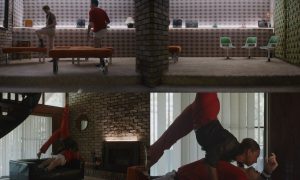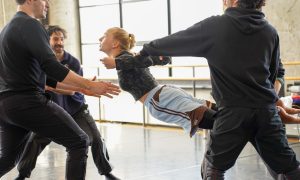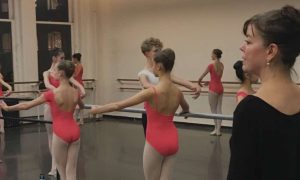As dancers, we ask a lot of our bodies, and our spines take center stage in every movement. The human spine is made up of 33 bones — 26 if we count the fused sacrum and coccyx — divided into the cervical (7), thoracic (12), lumbar (5), sacral (5), and coccygeal (4) regions. It gives us mobility in all directions, houses our spinal cord, and connects to muscles and fascia that support movement.
But what happens when something goes wrong? The lower back is a common site for pain, and we can see injuries such as stress fractures, disc issues, and nerve irritation. Why does this happen? The same reason it does for all areas of the body; there is excess stress in this area that the tissues can’t cope with!
The spine works as a whole
Joints don’t function in isolation — they rely on their neighbours to all contribute and move in harmony. For a joint to move freely, the ones around it must also have good mobility. If one joint lacks movement, another will compensate by moving too much, creating excessive stress and potential injury. In dance, where extreme ranges of motion are the norm, this imbalance can become a problem.
We ideally want a small amount of movement across many joints rather than excessive movement at just one or two. In dancers, trouble spots often appear at L4/L5 (lower back) and T12/L1 (thoracolumbar junction) because these areas tend to absorb too much motion when the rest of the spine isn’t contributing enough.
Stability vs. Rigidity
True spinal stability doesn’t mean bracing or locking up. It’s about having control and support while allowing full movement in three dimensions — forward/backward, side-to-side, and rotationally. This is where our deep stabilizing muscles, Multifidus and Transversus Abdominis, come into play. They guide motion rather than block it.
Recognizing nerve pain
Nerve pain often feels like pins and needles, numbness, sharp burning, or an “odd” sensation. These are warning signs — never push through them! If your back pain lasts more than a week, worsens, or is accompanied by nerve-like symptoms, seek professional help. Ignoring these signs can lead to more serious issues that impact your ability to dance.
Check in with your spine
Ask yourself: Can my spine move freely in all directions? If one area is stiff, where might my body be compensating? Classical and commercial dance styles both emphasize spinal extension — but does your extension come from all the joints working together, or is most of the movement concentrated in a few vulnerable spots?
By improving full-body mobility and strengthening deep stabilizers, you can keep your spine healthy and dancing for years to come. Move smart, move strong, and let your whole spine dance with you!
How well do you actually understand the spine? This video is a nice basic anatomy overview:
Mobilize your spine in sagittal plane. How well can you actually move? What areas are sticky? What moves too much? This can be used for an assessment and also the treatment as a mobilizer. This video shows sagittal plane motion:
Continue to assess and mobilize your spine with type 1 & type 2 spinal motion. These mobilizers not only encourage authentic movement in the spine but also allow the muscles to lengthen and then shorten in response to movement of our skeleton.
By Sally Harrison, BSc (Hons) Physiotherapy, Corrective Exercise Coach, Personal Trainer, Pilates Educator, of Band-ITS & Strength4Dance.















